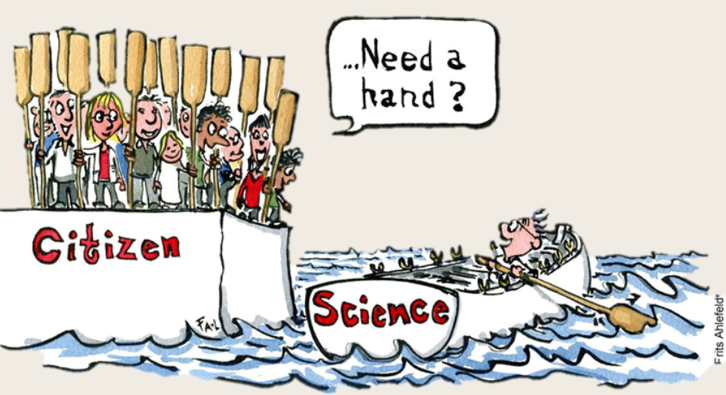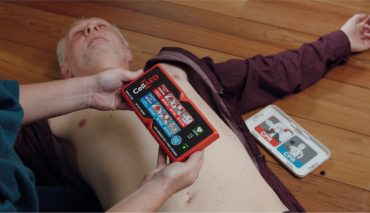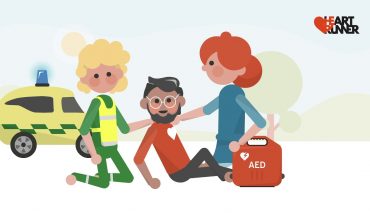Getting citizen scientists to map AEDs
Wouldn’t it be great if every time someone noticed an AED in public or in a business or shop, they registered that location somewhere for everyone else to find?
Mapping AEDs is a big, never-ending job. As the saying goes, many hands make light work – so, where can those ‘hands’ be found?
Rapid Response Revival Research Officer, Jessica Riese reckons one source of help could be citizen scientists.
In this article, Jessica explains what citizen science is, and how it might be employed to help improve public access to defibrillation.
Science is a process, not something set in stone. At Australian science museum, Questacon, they teach primary school kids ‘question, guess, test’. Or in other words, to be a scientist, all you need to do is ask a question, make a guess (hypothesis) and then do a test (experiment) to see if your guess was correct.
And easy as that, anyone can do science.
These days, it’s easier than ever to get involved. Especially with the advent phones which double as powerful personal computers, and provide access to the internet, a geolocation and camera wherever you go.
The contribution of volunteers – citizens – to researcher-led scientific projects has been dubbed citizen science. This is, essentially, a crowdsourcing of science, allowing anyone with the time and inclination to be part of the process.
While there is a long history of science performed by people who don’t list academic honorifics after their name, the term ‘citizen science’ wasn’t formally added to the Oxford English Dictionary until 2014.
In the same year, the Australian Citizen Science Association (ASCA) came into being.
ASCA host an Australian Citizen Science Project Finder, which currently lists over 400 citizen science projects active around Australia and the world.
Uses in (health) science
Although most of the projects listed in the ASCA Project Finder relate to biodiversity and conservation, this is not the be-all and end-all of citizen science.
The strengths of citizen science lie in two main areas: large scale data collection and analysis.
With data collection, a larger number of volunteers are able to cover a larger area and produce more data – such as photos, GPS locations and survey entries – than individual researchers.
The type of data collected can vary a lot, from logging local bird sightings to tracking the social burden of influenza and COVID-19.
In comparison, data analysis uses the computing power of the human brain to crack problems that even supercomputers can’t.
For example, Eterna is an RNA-designing game, where you try to create an RNA molecule to fit a certain shape or set of requirements. Scientists can then take these player-generated RNA sequences and test them in a lab.
This game contributed over 6000 RNA designs to the OpenVaccine project, aiming to improve the stability of the SARS-CoV-2 mRNA vaccine.
MyHeartMap
The MyHeartMap challenge was a competition based in Philadelphia County, Pennsylvania in 2012. Over eight weeks, contestants and teams were tasked with finding and logging every publicly installed automated external defibrillator (AED) in the county.
The individuals or teams who identified the most AEDs won a $10,000 prize. There were also pre-identified ‘golden’ AEDs which each awarded a $50 prize.
Entry was free, and all an entrant needed to do was snap a photo and answer a few questions about the condition of the AED.
The purpose of this contest was to create a crowdsourced map of every publicly available AED in Philadelphia County.
In the end, over 1,500 AEDs were identified in about 800 buildings around the county.
Publicly accessible AEDs have the ability to save lives – ideally if they are used within the first 5 minutes following a cardiac arrest.
Which means they need to be close, and they need to be accessible.
A public initiative like MyHeartMap was proven to be a very effective way to locate and map AEDs. In MyHeartMap’s case however, the map soon fell into disrepair.
Why participate?
Evidently, to create a living map of publicly available AEDs, we would need ongoing participation.
The success of MyHeartMap could be attributed to its extrinsic motivator – the cash prize at the end. As soon as that cash prize was won, contributions stopped.
Yet many citizen science projects – and broader volunteer programs – run for years without monetary reward for their contributors.
In these cases, participation appears to be linked to both extrinsic and intrinsic motivations.
Intrinsic motivating factors include interest and enjoyment, such as curiosity or a personal desire to learn.
Meanwhile, extrinsic motivators can be things like social expectations, reputation – and yes, even monetary rewards.
One study found that while personal interest can drive initial participation, long term commitment tended to include collaborative as well as self-directed motivations.
Social connection is an important motivating force, especially in these mobile and remote times. Many volunteers are retirees, who are looking for activities that involve engaging with other people.
Another study found that other motivating forces include the desire to stay mentally and physically active, and making a difference to your community.
In contrast, the study found that demotivating factors included the time commitment, complex or challenging tasks, and the term ‘citizen science’.
Some of this was to do with the individual words. ‘Science’ was perceived as something performed in a laboratory, while ‘citizen’ is not a label many identify with, and they found this off-putting.
In other cases, it was simply a lack of familiarity with the term causing confusion. In reality, citizen science, like crowdsourcing, is simply a recent term for activities that have been around for decades.
Science, especially that for public health and wellbeing, shouldn’t be in an ivory tower. With the interconnectedness of this digital age, it’s easier than ever for anyone to contribute to a communal pool of information.
If we could use this data to ensure AEDs were found faster in an emergency, it could actually save lives.
This article first appeared on Jessica Riese’s LinkedIn.



